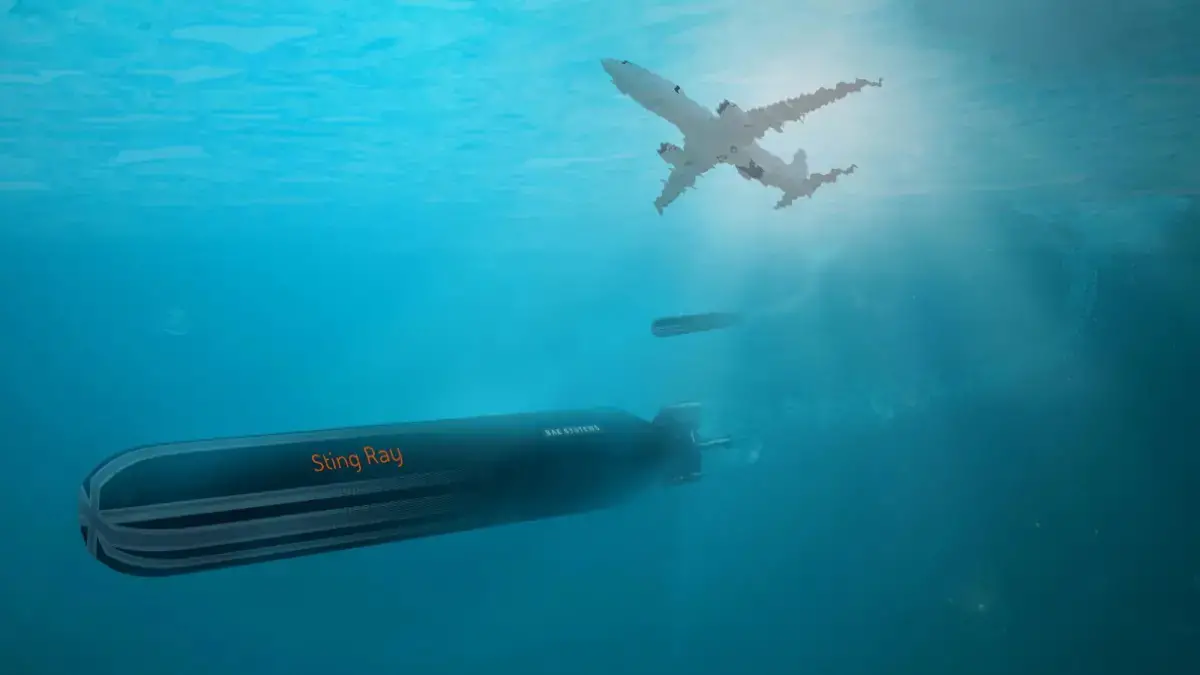The U.K. Ministry of Defence has awarded BAE Systems a £60 million contract to upgrade the Royal Navy’s autonomous Sting Ray lightweight torpedo. The team will design and develop the Sting Ray torpedo upgrade over a four-year assessment phase, which will include the construction of prototypes and in-water trials. The upgrade will implement new technological features, including added deployment options, ensuring that Sting Ray continues to meet the challenge of emerging threats now and into the future. The new contract will support more than 80 highly-skilled engineering jobs at BAE Systems’ Maritime Services business in Portsmouth as well as around 20 specialist manufacturing jobs at BAE Systems’ site in Hillend in Fife. It will also create additional investment in UK SME and high-tech suppliers across the UK.
“This is great news for the Royal Navy and other Sting Ray users; we are taking what is already a very good anti-submarine warfare weapon and turning it into the best in class,” said Cdre Steve Bolton, Deputy Director Aviation Programmes, Royal Navy.
“The Sting Ray torpedo remains at the heart of anti-submarine warfare. It’s a huge sign of confidence for the Company to be entering the next phase of development and be able to demonstrate its additional capabilities. This contract is vitally important to the UK’s strategic underwater defence plans and an important step in the advancement of our capability for decades to come,” said Scott Jamieson, Managing Director of BAE Systems’ Maritime Services.

The Sting Ray is a British acoustic homing lightweight torpedo (LWT) manufactured by GEC-Marconi, who were later bought out by BAE Systems. A desire not to be dependent on US torpedo purchases led to a research programme starting in 1964 to develop a British torpedo. Initially designated Naval and Air Staff Requirement (NASR) 7511, it was (much later in the late 1970s) designated the Sting Ray torpedo. It entered service in 1983. Design studies in the mid-1960s proposed that a tank of polyethylene oxide be carried behind the warhead. This polymer would be exuded at the nose to reduce the drag coefficient. The torpedo was built at the MSDS (later MUSL) plants at Neston (in Cheshire) and MUSL in Farlington and Waterlooville near Portsmouth. Guidance systems were made by Sperry Gyroscope Company.
In-service with the Royal Navy and Royal Air Force, it has recently been selected by the Norwegian Armed Forces and is capable of integration into surface and air platform mission systems. Sting Ray Mod 1 is an air-launched Anti Submarine Warfare lightweight torpedo launched from frigates, helicopters and maritime patrol aircraft against submarine targets of all types. It has sophisticated acoustic homing system and a highly accurate navigation system. The torpedo can detect, classify and attack targets autonomously. Developed from its predecessor Mod 0 torpedo, Sting Ray Mod 1 features a completely new sonar system, an Insensitive Munition Warhead, a new tactical and navigation system and a new sea water battery system. It has low through life costs and requires no intrusive maintenance throughout its service life.











